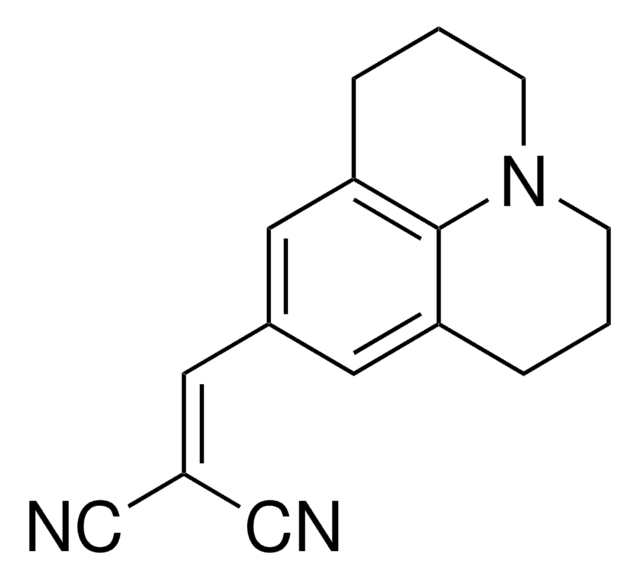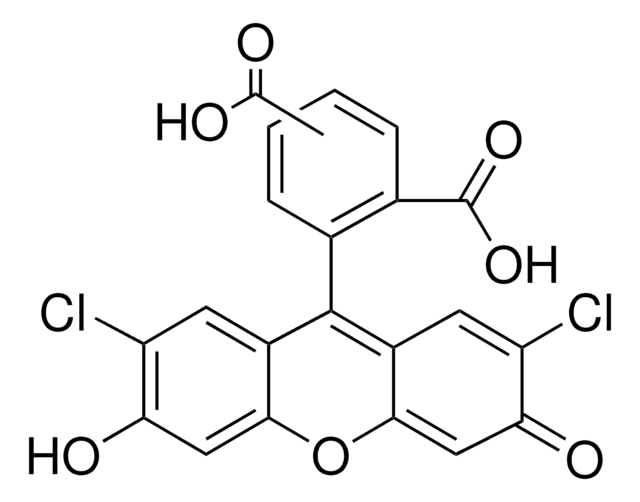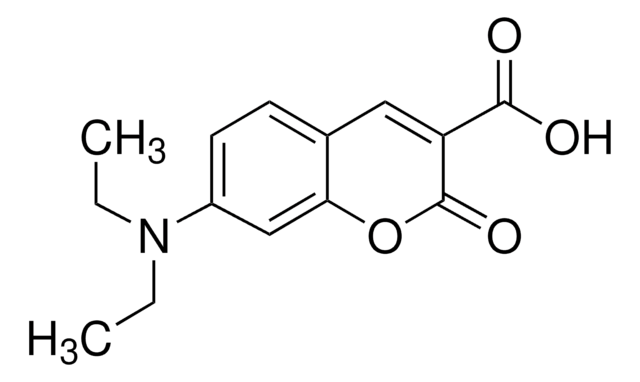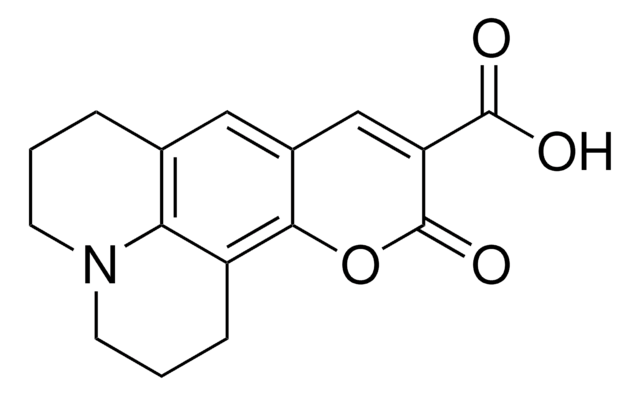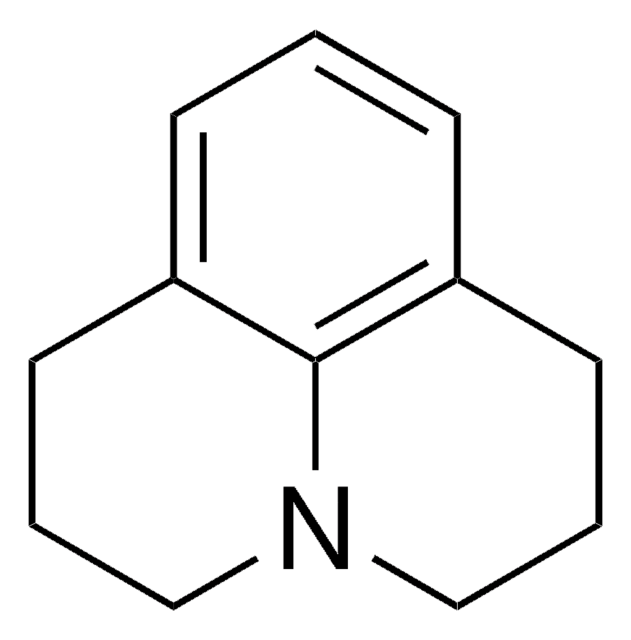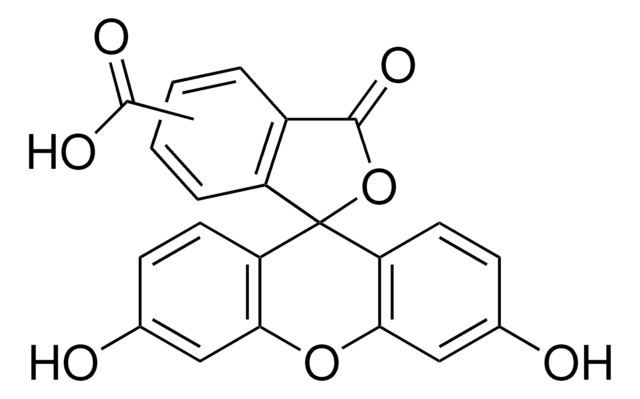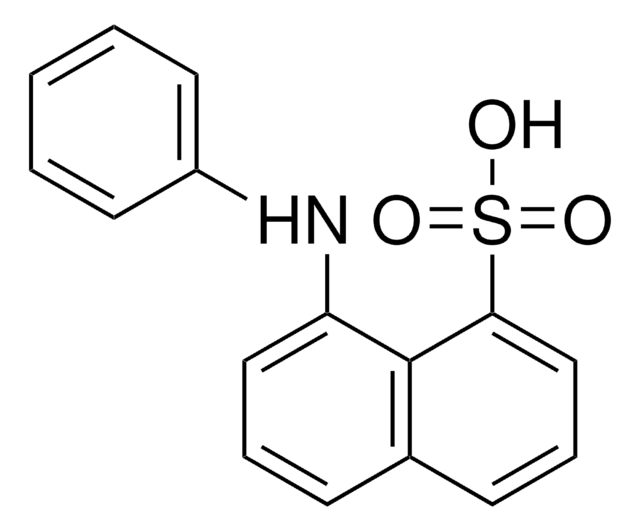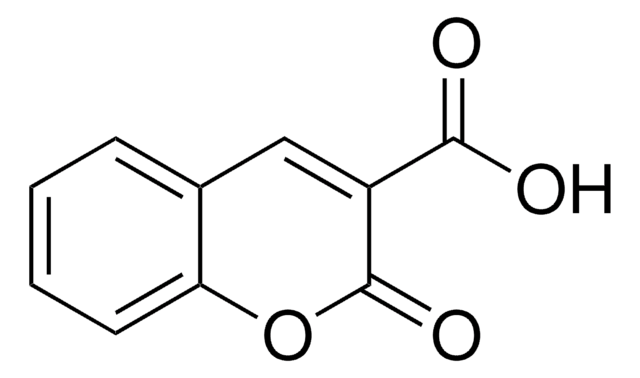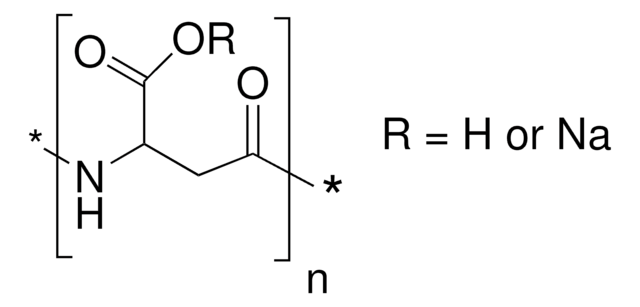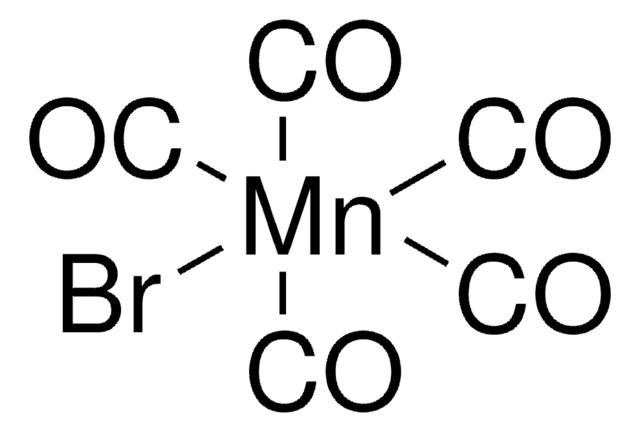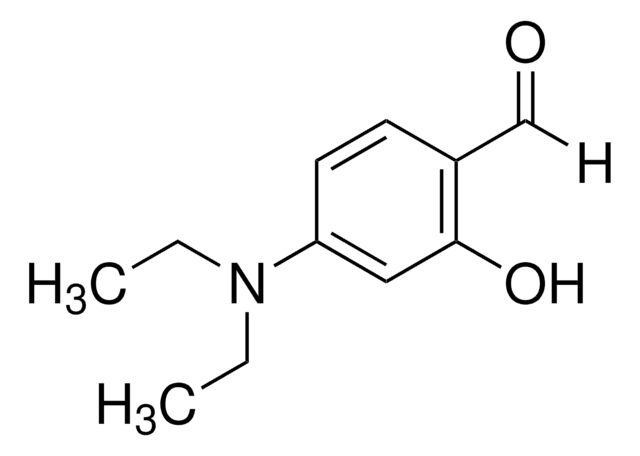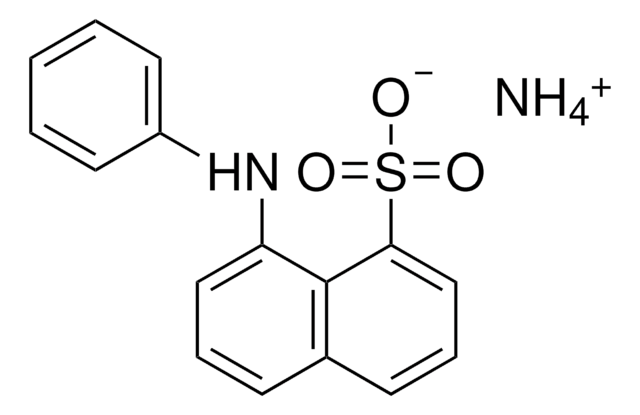Kluczowe dokumenty
72301
9-(2-Carboxy-2-cyanovinyl)julolidine
BioReagent, suitable for fluorescence, ≥97.0% (HPLC)
Synonim(y):
9-([E]-2-Carboxy-2-cyanovinyl)julolidine, CCVJ
About This Item
Polecane produkty
linia produktu
BioReagent
Poziom jakości
Próba
≥97.0% (HPLC)
Formularz
solid
rozpuszczalność
DMSO: soluble
chloroform: soluble
fluorescencja
λex 433 nm; λem 500 nm in 50 mM Tris pH 8.0; 40% glycerol
przydatność
suitable for fluorescence
ciąg SMILES
OC(=O)\C(=C\c1cc2CCCN3CCCc(c1)c23)C#N
InChI
1S/C16H16N2O2/c17-10-14(16(19)20)9-11-7-12-3-1-5-18-6-2-4-13(8-11)15(12)18/h7-9H,1-6H2,(H,19,20)/b14-9+
Klucz InChI
JXENNHTVELFRHV-NTEUORMPSA-N
Szukasz podobnych produktów? Odwiedź Przewodnik dotyczący porównywania produktów
Zastosowanie
Opakowanie
Nie możesz znaleźć właściwego produktu?
Wypróbuj nasz Narzędzie selektora produktów.
Kod klasy składowania
11 - Combustible Solids
Klasa zagrożenia wodnego (WGK)
WGK 3
Temperatura zapłonu (°F)
Not applicable
Temperatura zapłonu (°C)
Not applicable
Środki ochrony indywidualnej
dust mask type N95 (US), Eyeshields, Gloves
Wybierz jedną z najnowszych wersji:
Masz już ten produkt?
Dokumenty związane z niedawno zakupionymi produktami zostały zamieszczone w Bibliotece dokumentów.
Klienci oglądali również te produkty
Nasz zespół naukowców ma doświadczenie we wszystkich obszarach badań, w tym w naukach przyrodniczych, materiałoznawstwie, syntezie chemicznej, chromatografii, analityce i wielu innych dziedzinach.
Skontaktuj się z zespołem ds. pomocy technicznej